Shanghai Book City Renovation
Wutopia Lab designed the Shanghai Book City renovation as an expansive and sophisticated space in Shanghai, China.
The Biggest Challenge is to Confront the Romanticized Memories
At the end of 2021, Shanghai Book City declared closure for renovations through a series of events. It was even misunderstood by some self-media outlets as permanent closure. As a result, readers flocked to the bookstore in tribute. In retrospect, the challenges faced by the first comprehensive complex of book sales in China, inevitably declining under the impact of the internet, were overlooked. Instead, what emerged was a romanticized, elevated, and sublime collective memory. Collective memory has the potential to distort and rewrite the true form of this project and even distrust any future transformations. Indeed, the architect’s greatest challenge lies in the idealized collective memory.Building a New City with Books
Conditions for Building a City
In this upgrade and renovation, the bookstore, built in 1998, needs to undergo inspection according to the latest fire safety regulations. Therefore, it is necessary to increase the number, width, and location of evacuation stairs and upgrade by adding sprinklers and fire curtains.The Shanghai Book City aims, through this upgrade and renovation, not only to ensure operational efficiency but also to continue being a cultural landmark in Shanghai, contributing to the revival of Fuzhou Road as a cultural street.
Building a city starts with the Book Mountain
Seizing the opportunity of this upgrade and renovation, I hope to release the space on the ground floor, combining it with sidewalk design to create a manageable semi-open public cultural square. This will allow Fuzhou Road, which has lost its pedestrian character, to regain a public space where citizens can gather.I utilized the original architectural height differences, combined with sidewalk design, to create a terrace-like square and formed an indoor platform named ‘Book Mountain’. This three-dimensional mountain within the building serves as a platform. It can be used for book launches, exhibitions, and events, becoming a stage for cultural activities. Readers can freely sit, stand, peruse, and stroll. They can even engage in impromptu singing. Standing at the highest point allows one to overlook the bustling Fuzhou Road, prompting contemplation.
The overall tone of Fuzhou Road is grey, and I aim to enhance the intention of the Book Mountain by using an accent color. The red Book Mountain becomes the first focal point in the pedestrian’s line of sight. From here, one can transition through escalators into the bookstore, which functions as a vertical city.
Bookshelves as Façade
I used a 10,000-meter-long bookshelf to construct the façade of this city. Losing the underground floor also meant losing the original library. Despite the addition of new evacuation stairs, bathrooms, and utility rooms, while ensuring the bookstore and commercial areas, it was not feasible to provide a library on the upper floors. Therefore, I decided to let the books go on shelves. Floors 2-6 house the reading area, the 1st and 7th floors serve as storage areas, and the 8th floor is dedicated to storage and cover displays. The tall bookshelves in the two atriums serve as showcases. These continuous bookshelves not only accommodate more than 470,000 books, exceeding the library’s specified capacity of 400,000, but also form a continuous façade of books along the street front of the bookstore. During the media open day before the bookstore’s opening, a journalist told me that the uninterrupted book display made her feel like a fish swimming in the ocean.The floor-to-ceiling windows of the bookstore facade serve not only for lighting but also to showcase the internal activities of the bookstore; they act as a stage. People on the street looking into the windows perceive the readers inside like scenes from a movie, while those inside looking out see the people on the street, creating a theatrical scenery. When readers ascend the escalator to the fourth floor, named ‘Auditorium,’ the city unfolds in an incredible illusion before the two-story high glass windows to the north, shining brightly like crystal in the night.
Design: Wutopia Lab
Contractor: Shanghai Xinhua Media
Design Team: Yu Ting, Pu Shengrui, Li Hao, Lv Jie, Lin Chen, Li Peng, Feng Zixiang, Zhang Haoran, Wang Qiuyan, Feng Yanyan, Zhang Danman, Wang Lei, Xu Zijie
Owner Team: Li Pengcheng, Yin Yixin, Xu Saigang, Zhu Qi, Dong Jie
Photography: CreatAR Images

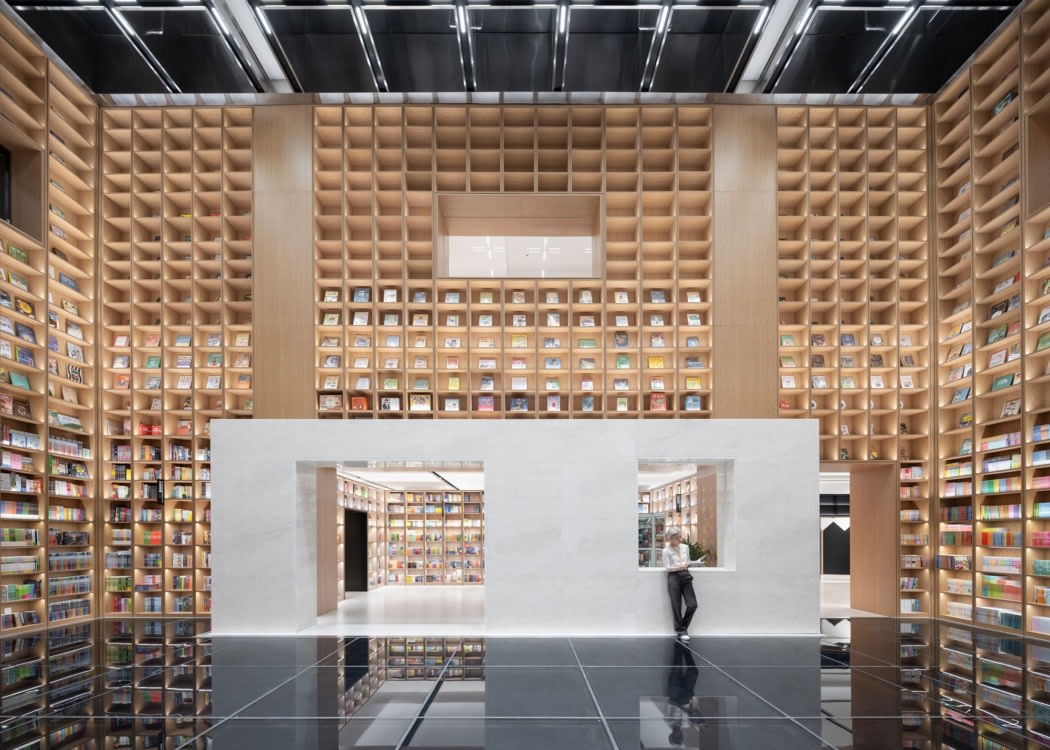
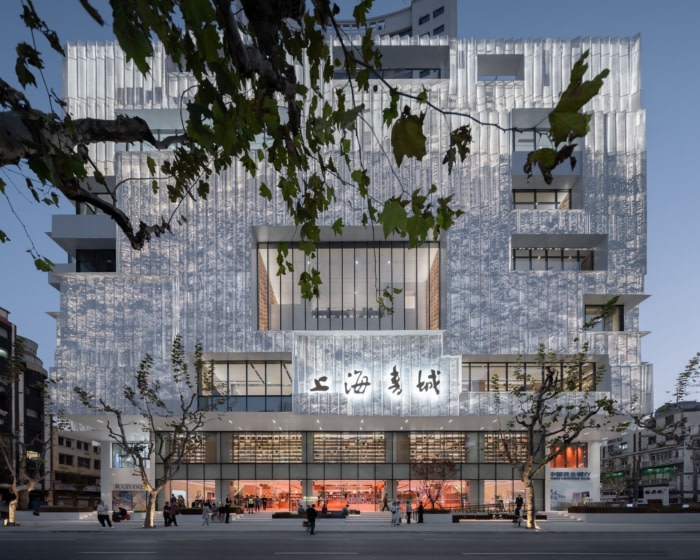
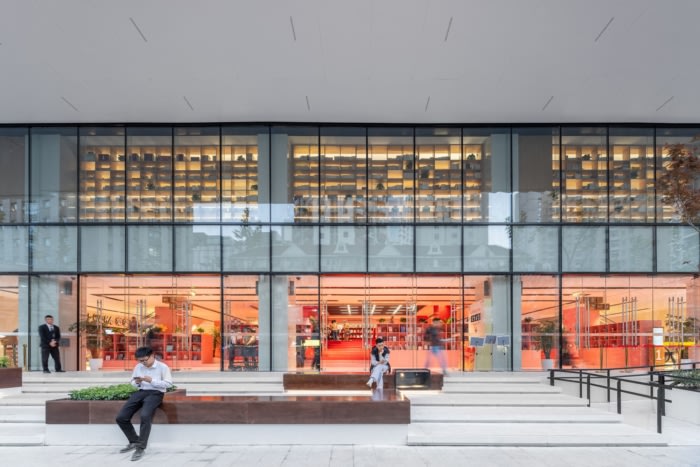
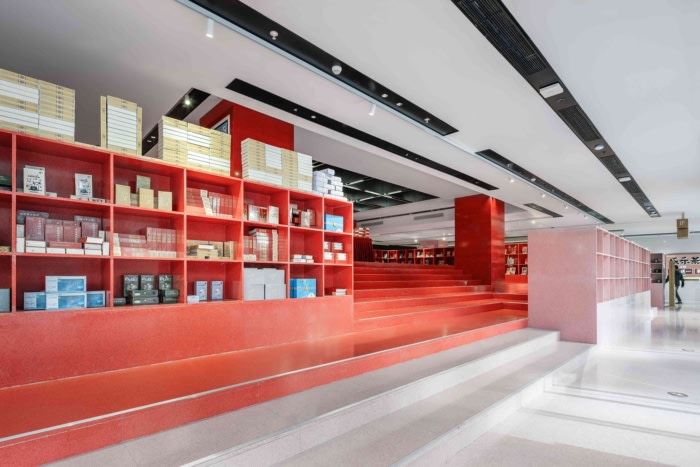
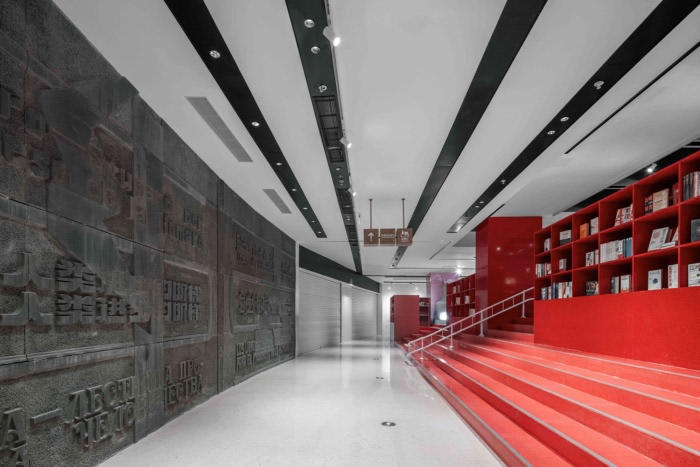
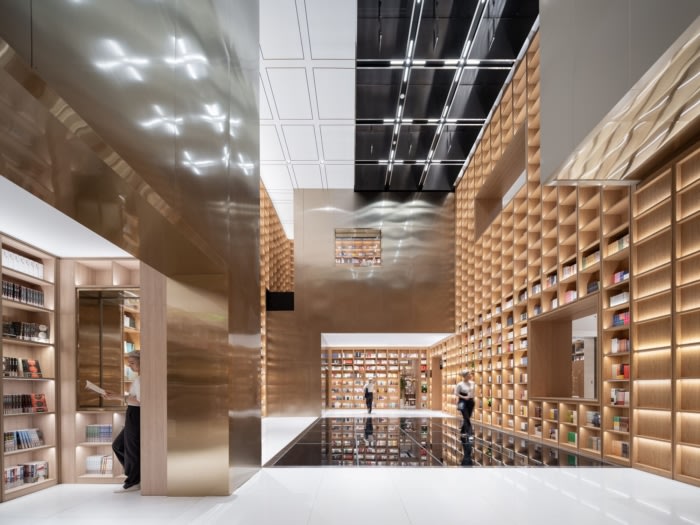
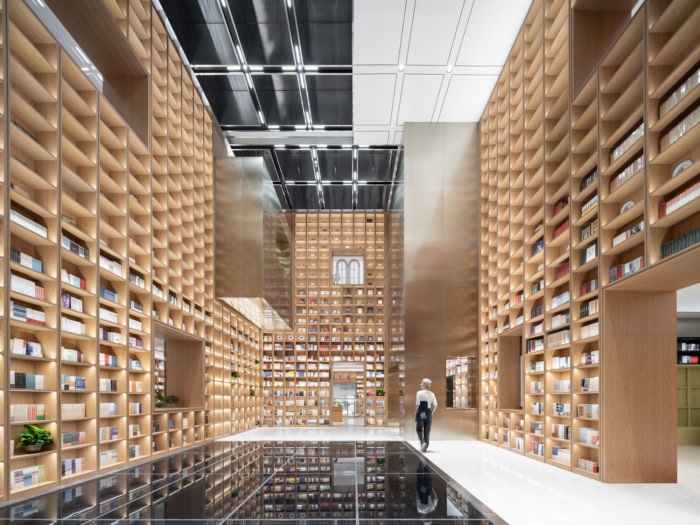
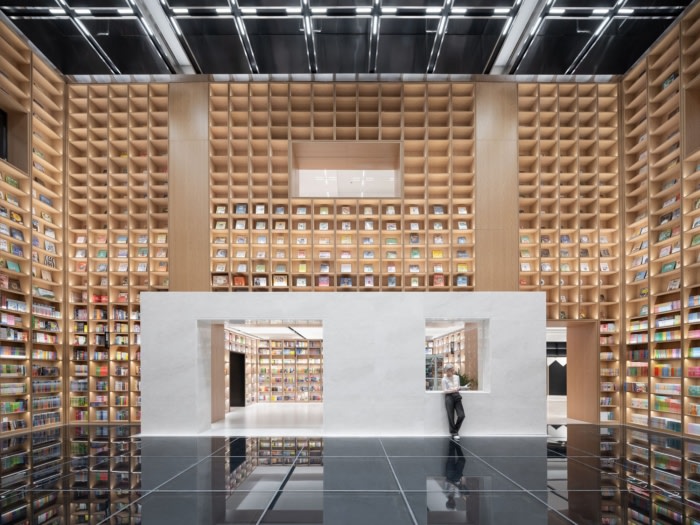
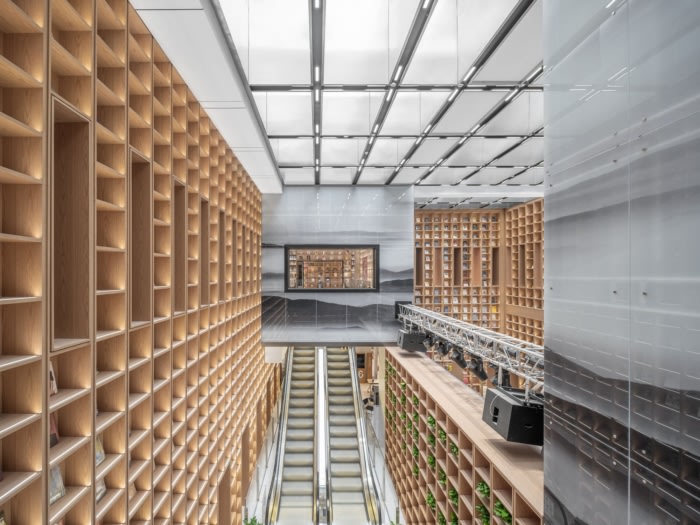
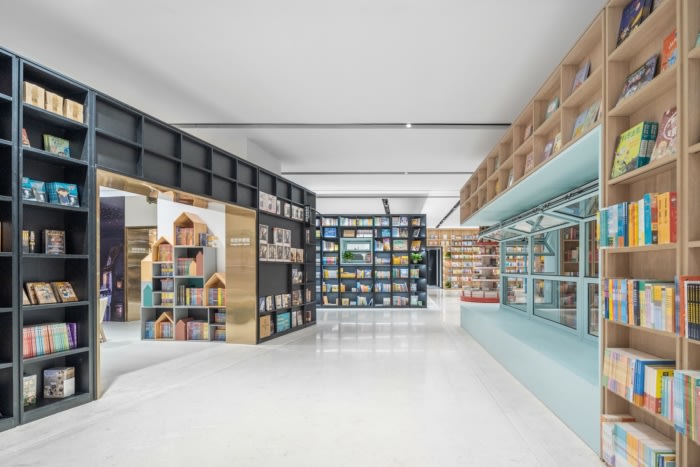
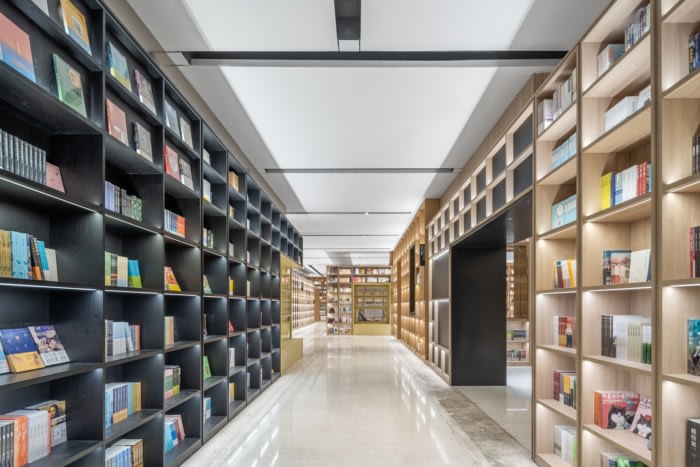
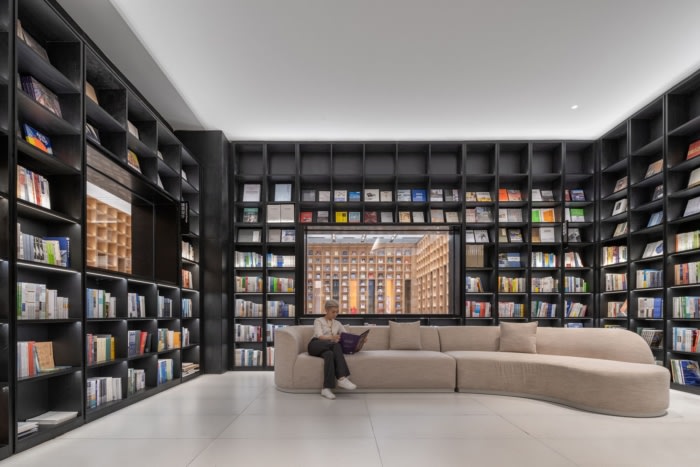
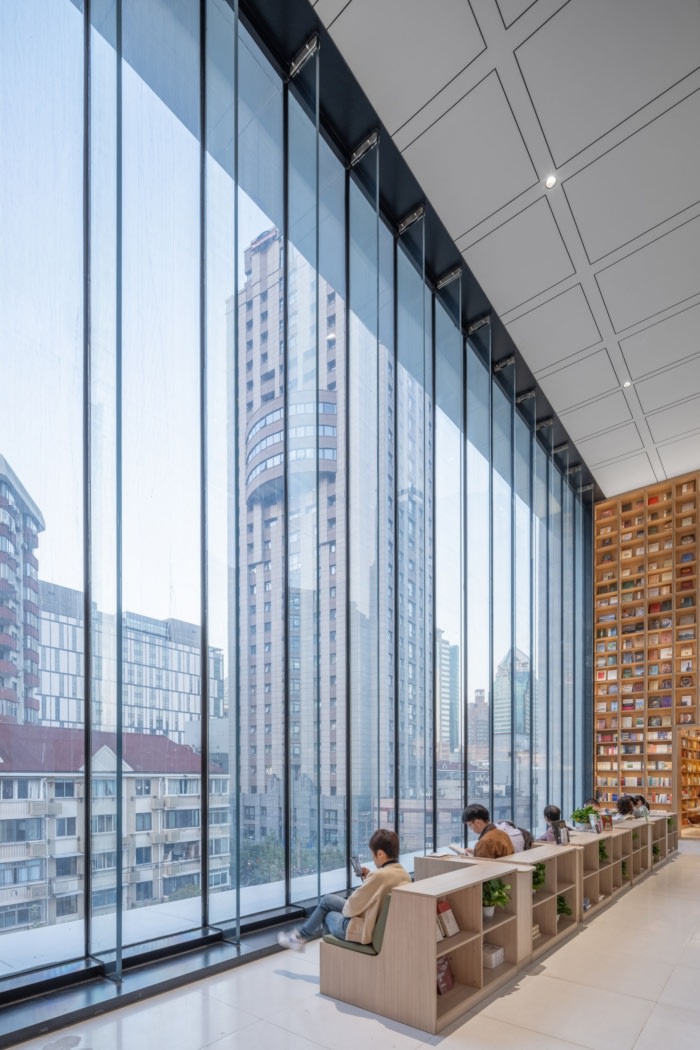
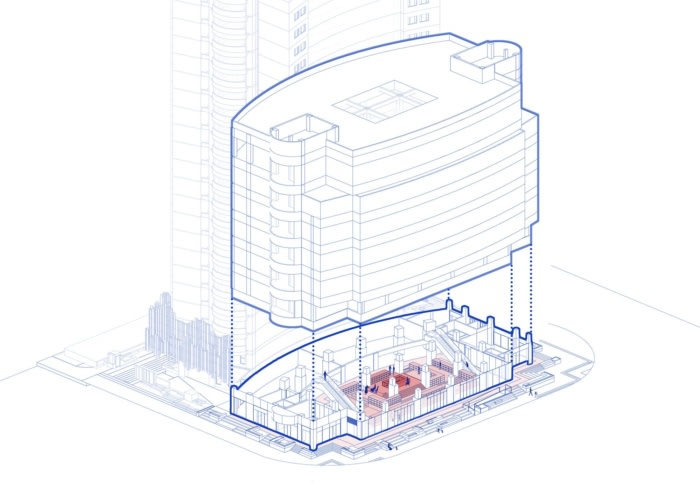
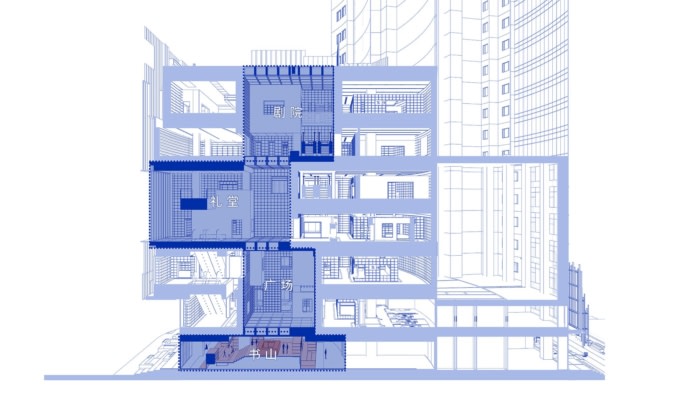











Now editing content for LinkedIn.